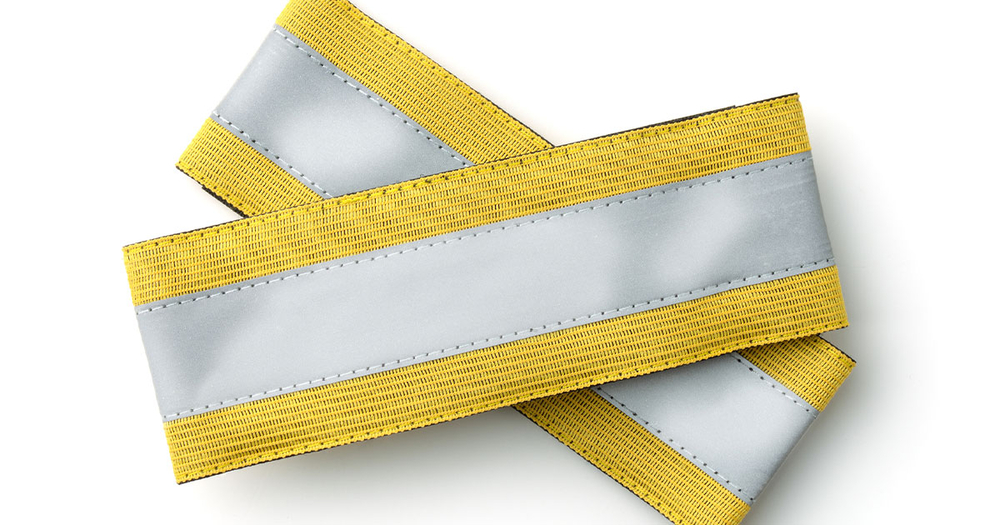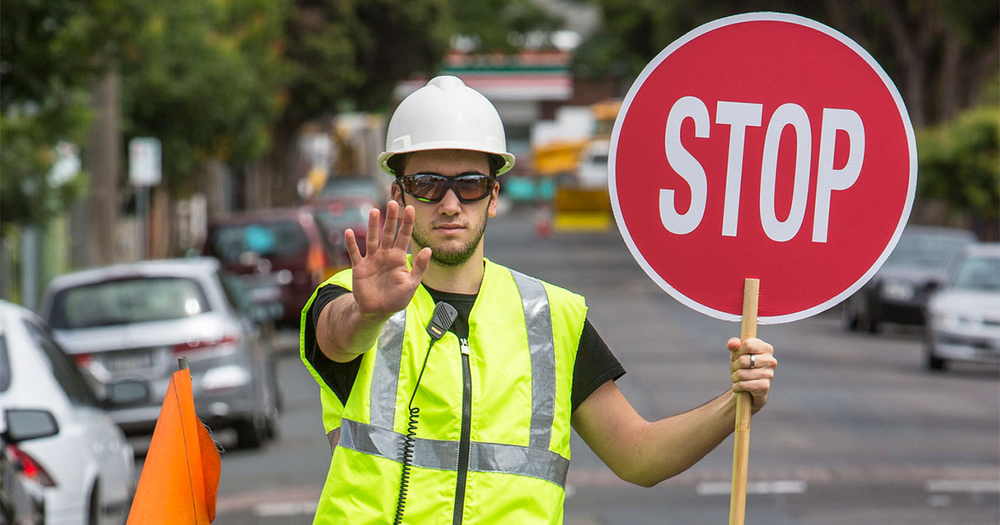
Working near traffic poses real occupational safety concerns. No matter how hard workers attempt to avoid traffic, their safety will remain in jeopardy if they are invisible to drivers.
Safety vests are an important tool to ensure workplace safety. Also known as “high-visibility vests”, this clothing apparel improves public safety. Drivers experience enhanced visibility when roadside workers wear safety vests.
Safety vests are not a one size fits all item. Different workers may have different safety vest needs due to the conditions of their work. What are the options of safety vests, and how do you know which is right for you?
The Occupational Safety and Hazard Administration (OSHA) has laid out important factors that influence workers’ safety. Using these factors to determine your safety vest needs sets a standard for high visibility
A primary factor that differentiates workers is the intensity of traffic. The intensity of traffic is determined by the speed of cars passing by, the time of day that workers are out, and the distance that workers are from passing traffic.
Each safety vest includes silver reflective tape that covers a large portion of the surface. Reflective tape helps drivers see the worker by reflecting light coming from street lights, headlights, or the sun. The wider is the reflective tape, the more likely it is that drivers will see the worker.
Finally, the placement of the tape and the color of the safety vest influence the visibility of the worker. Most safety vests come in yellow or orange, though you can find other options such as green or black.
The American National Standards Institute for High Visibility Safety Apparel and Accessories (ANSI) has determined the different types of vests. The class types are class 1 safety vests, class 2 safety vests, and class 3 safety vests.
Class 1 vests are designed for low-impact traffic areas. They are also referred to as Non-ANSI safety vests because they do not reach ANSI standards. They are to be worn in areas of low traffic, where vehicles do not exceed 25 miles per hour.
Class 1 vests are dependable, economic options. They are supposed to have at least 155 square inches of reflective tape. The dimension of the reflective tape can be either 9.39 linear feet of 1 3/8 inch tape or 6.46 linear feet of 2-inch tape.
The reflective tape for the class 1 vest should be placed as a 360-degree vertical stripe, passing over each shoulder.
Class 1 vests are generally worn by people in low traffic areas, such as parking lot attendants, shopping cart retrievers, warehouse workers, roadside working personnel. This is a good option for anyone that wants high visibility without meeting ANSI standards.
For a vest that offers great versatility, consider the Safety Apparel “The Party Chief” Survey Vest is a lime green vest. This Class 1 vest has the most pockets, grommets, storage, hangers, and venting to make it perfect for the demanding expectations of the industry. Furthermore, this vest has more reflective striping than a Class 3 vest. It can be purchased for $113 per vest.
Alternately, the Kishigo Enhanced Visibility Professional Utility Vest is available at $61 per vest. This Class 1 vest includes heavy-duty poly/cotton solid front with mesh back, oversized zipper front closure reinforced with durable webbing, 2” wide high-performance reflective material with 3” high visibility contrasting lime, reflective piping along with pockets & down backsides, left and right mic tabs., a padded neck for comfort, and 2 lapel grommets.
Class 2 vests are designed for areas of high traffic and low visibility. OSHA designates the conditions necessary for Class 2 vets as working nearby traffic between 25-50 mph, working with heavy machinery, working in inclement weather, and working in low visibility conditions.
Class 2 vests must have at least 201 square inches of reflective tape, and 775 square inches of background fabric. The tape can be either 12.2 linear feet of 1 3/8 inch tape or 8.373 linear feet of 2-inch tape. The reflective stripes should be placed over each shoulder. In addition, there should be a single or double 360-degree horizontal stripe. They do not have sleeves. The color of the vest can be orange or bright yellow.
High-volume parking keepers, airport workers, school crossing guards forest workers, and toll booth operators are examples of people who use Class 2 safety vests.

Class 3 vests are designed for people working the highest traffic and low visibility areas. OSHA designates conditions for Class 3 vests as areas where traffic exceeds 50 miles per hour, and there is no visibility.
Class 3 vests require at least 310 square inches of reflective tape and 1240 square inches of background fabric. The dimensions should be 12.92 feet of tape with a width of 2 inches. These vests can be orange or yellow and must have sleeves. The reflective stripes of tape should form full silhouette outlines, in addition to being on the arms and legs. This is necessary to ensure that drivers can see workers at nighttime.
People who wear Class 3 vests are those that work at nighttime and/or near to very vast traffic. Prominent examples include roadway construction workers, utility workers, survey crews and emergency responders, site investigators, railway workers, and flagging crews.
ANSI Class 3 safety vests come in many different forms and sizes. This allows for everyone to find a version that fits their needs and their budget.
The Mesh Triple Trim Safety Vest comes in lime and orange. The triple trim striping creates added visibility. These Class 3 vests also include an Expandable Radio Pocket, Pencil Pocket, Zipper Outer Pocket, Large Inner Pocket, and Zipper Closure. They can be purchased in various sizes, at $18.50 per vest. Alternatively, you can purchase the slightly simpler Mesh Safety Vest in lime or orange at $13.25 per vest. This option does not have a triple stripe.
The Kishigo Heavy Duty Vest features Ultra-Cool™ 100% polyester mesh, brilliant Trim reflective edging, zipper front closure with durable webbing reinforcement, and left and right chest mic tabs. It can be purchased for $22.00 per vest. Or, you can purchase the Kishigo Professional Surveyor vest for $64.00.
Finally, the SECO Utility Surveyor’s Vest comes with Outlast Material that makes it perfect for all weathers. The Outlast Material balances your temperature through the use of patented microencapsulated Thermocules(TM) that absorb and store excess heat. The heat is then released when your body needs it most. Outlast's phase change material allows you to stay cooler in the summer and warmer in the winter.
Safety vests are the bare minimum for people working in nearby traffic. But there is a host of other apparel that can help workers stay safe and comfortable on the job.
Hi-Vis t-shirts offer a comfortable shirt option that can be worn underneath vests, or on its own. They are offered in green and orange, with or without reflective tape, and are short or long-sleeved.
Hi-Vis safety pants offer additional safety for the lower half of the body and provide drawstring waists with elastic, and adjustable or elastic pant leg openings to provide a tight fit in adverse weather conditions.
Safety outerwear offers long-sleeve jackets that are a good option for cold weather. This wide range of outerwear has warmth, comfort, and safety all in one package. They are made of durable, waterproof, rip-stop material, many feature fleece bodies and hoods, quilted sleeves, and adjustable cuffs for easy use when wearing gloves.
Safety headwear offers headgear options for both warm and cold weather and can protect your head from the sun or ensure extra warmth. Several models of both warm-weather and cold-weather headgear are available, many with high-visibility safety enhancement features.
Fleece-lined hoods are also available to keep you snug in even the harshest weather. All feature durable construction with quality materials for years of useful service.
Ensuring that street workers are visible is no light topic. Using the guidelines presented by American National Standards Institute and Occupational Safety and Hazard Administration, you can determine the equipment you need to get out of the dark and stay safe. Once you have an idea of what kind of equipment fits your needs, Baseline Equipment has an abundance of options at your disposal.